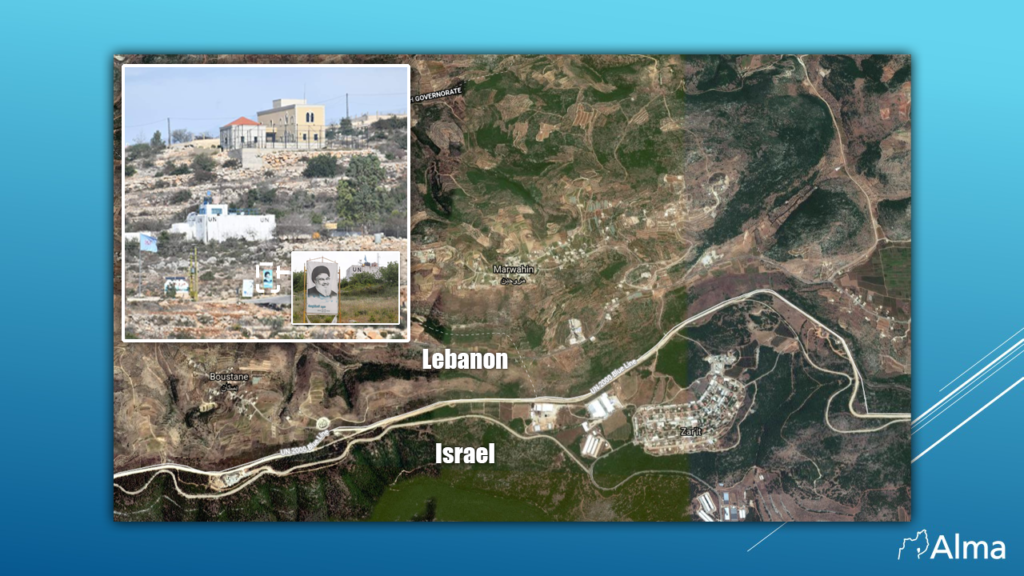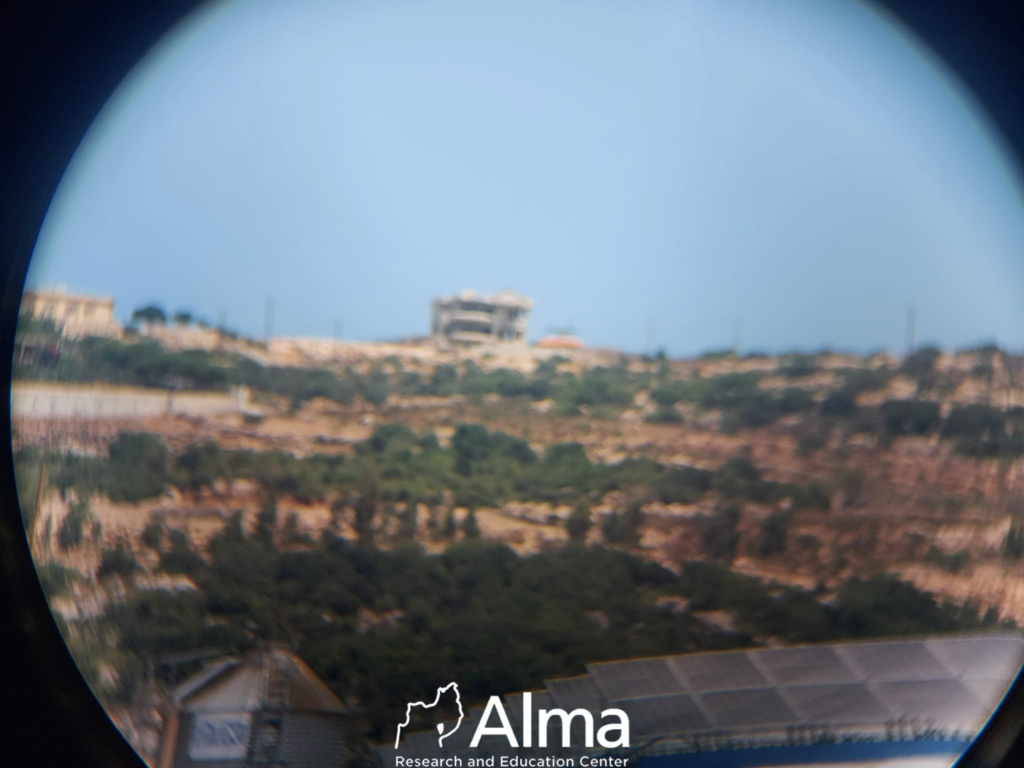Written by Yaakov Lappin
Israel’s border with Lebanon is deceptively quiet on most days, but the month of August provided the latest example of how rapidly the explosive nature of the border can manifest itself.
On August 4, a Palestinian armed faction based in Lebanon – likely Hamas – fired rockets at Israel. When Israel responded to that attack with airstrikes in southern Lebanon for the first time in many years, Hezbollah decided to ‘take ownership’ of the event and fire its own barrage of rockets at northern Israel.
“The explosive level of this area is constant,” said Maj. (res.) Tal Beeri, head of Alma’s Research Department. “It hasn’t changed in years. At any point, it could ignite rapidly. This has always been the case,” said Beeri.
He drew attention to the fact that contrary to some claims, Hezbollah fired repeatedly at Israel in the past since the 2006 Second Lebanon War, including a 2019 effort to kill IDF soldiers in a military ambulance near the border town of Avivim using anti-tank missiles.
What is new, Beeri pointed out, is the role of Palestinian factions, apparently Hamas, in this latest escalation.
One possible scenario is that Hamas, as part of its efforts to pressure Israel into agreeing to a broad arrangement that will see Gaza’s economy built up, decided to fire the rockets on August 4 without Hezbollah’s knowledge.
“My assessment is that Hamas would not do this on its own. It likely had some backing – from Iran. This could be part of a power play and an expression of some tension between Iran and Hezbollah,” said Beeri. In this scenario, the Iranians green-lighted Hamas’s attack, thereby sending a message to Hezbollah that they wished to see more friction with Israel from Lebanon, and also sending a message to Israel, according to which Iran will keep up attrition attacks against it from multiple fronts, including Lebanon.
Hamas has armed cells active in Palestinian refugee camps in Lebanon, in places such as Tyre and Sidon on the coast, Rashidieh, and Beirut. During the August 4 attack, Beeri assessed, the attacking vehicle loaded with a rocket launcher drove almost as far south as Marajaayoun, which is on the Litani river but likely didn’t cross the river.
The cell fired Grad rockets, which have a range of 40 kilometers, but in this case, they traveled 10 to 15 kilometers towards Israel.
An increased Palestinian theme in Lebanon
Signs of an increased Palestinian theme in southern Lebanon have been apparent since Israel’s May conflict with Hamas in Gaza. During the May conflict, Palestinian factions fired on Israel from Lebanon, and now, a fixed Palestinian flag is clearly visible in the southern Lebanese border village of Marwahin, facing Israel.
The flag is part of increased messaging from Hezbollah and its chief Hassan Nasrallah, who has attempted to portray himself as key ‘defender of Jerusalem,’ standing side by side with Hamas.
Meanwhile, the village of Marwahin, like other border villages, is under Hezbollah’s full control. A tour of the border conducted by Beeri in recent weeks served as an illustration of just how complex this local sector is.
“It is a microcosm,” Beeri said. “In this very small area, all of the active forces can be found.” The area is dominated by Hezbollah, which also controls forward homes and uses them as lookouts.
In fact, a forward-positioned home in Marwahin was used by Hezbollah to identify the ill-fate 2006 IDF border patrol that became the target of a deadly Hezbollah raid – an incident that directly set off the Second Lebanon War.
Next to the home, Beeri pointed out, is a tower used by UNIFIL, a United Nations force he described as being “present without having a presence.” Hezbollah has made a mockery of UN Security Council Resolution 1701, passed at the end of the Second Lebanon War, which banned the presence of terror organizations in southern Lebanon.
Beeri pointed out that UNIFIL is incapable of enforcing the resolution, and could even become an operational challenge to the IDF, due to the fact that Hezbollah is prone to using UNIFIL’s positions as human shields and firing positions, as it has in the past.

“If an exchange of fire begins, the IDF faces an operational challenge,” Beeri warned. Nearby, meanwhile, is a Lebanese Armed Forces position, marked by a tall antenna.
The LAF has collaborated closely with Hezbollah, Beeri said, and in the recent past, that antenna was used by Hezbollah as a relay communications station.
“It has also been used by Hamas to place radio broadcaster on it, aimed at Israel, and used to broadcast incitement material to Israeli Arabs on a frequency that is very close to an Israeli northern radio station,” said Beeri.
Near the LAF position is a UNIFIL checkpoint, and next to that was a poster of Nasrallah – “to remind everyone of who is in charge,” Beeri explained.
“The village is very close to the border. It’s higher up so it controls the area,” he stated. This pattern, complete with the use of homes near the border as lookouts to gather intelligence, characterizes multiple southern Lebanese villages.
Hezbollah has also drawn up battle procedures for all of the area’s sub-sectors – operational plans that Beeri said are “ready to go” as soon as the command is given.
“The IDF said that a third of structures in southern Lebanon are used by Hezbollah in one way or another. This is the epitome of human shielding,” he said.
Meanwhile, as tensions mount once again between Israel and Hamas in Gaza, Beeri wondered whether it was time for Israel to begin imposing its own equations on Hamas, viewing it as a single entity no matter where it operates from and responding in kind.
“If they fire from Lebanon, perhaps Israel should respond in Gaza. Israel has been dragged into the adversary’s equations too often, and it has become problematic,” he said. “Perhaps the time has come to see Hamas as a single organic entity and to reserve the option of striking its assets in Gaza or in Lebanon. To turn its deployment into a vulnerability,” he added.
Yaakov Lappin is an Israeli-based military affairs correspondent, analyst, and research associate at the Alma Center. He is an associate researcher for the Begin-Sadat Center for Strategic Studies, and an in-house analyst for the Miryam Institute. He provides coverage and analysis for a number of media outlets, including JNS.org and Janes Defense Weekly.







One Response
Thanks for very important info. about the activities in the Lebanon-syria area.
And with special referance to your artical about the Hezbollah’s underground network!
That was unique to your institute